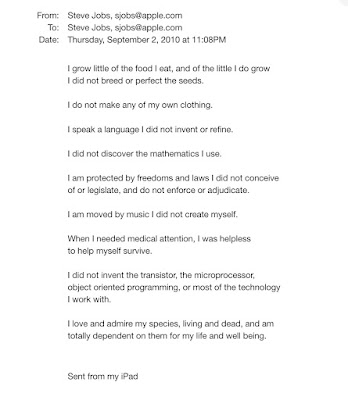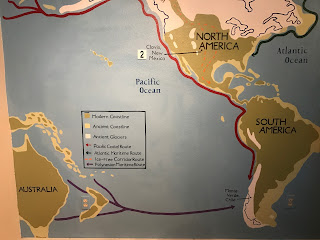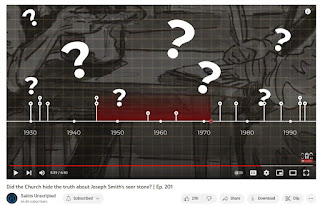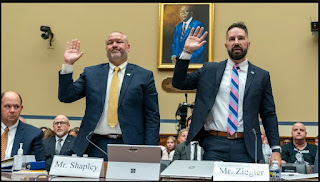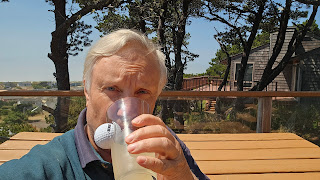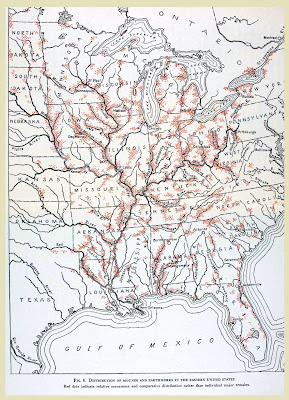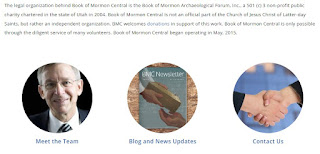debts to others
Considering the contributions of those who preceded us.
• Steve Jobs email to himself 13 months before he died.
 |
| (click to enlarge) |
We stand on the shoulders of giants everyday.
Next time you speak to a cynic, ask them these 10 questions:
1. How does the electricity grid work?
2. If you tried to create your food purely from scratch, how long would it take you?
3. How much work is involved in maintaining sewage systems?
4. How much time did people spend building the roads you drive on everyday?
5. Who created air conditioning?
6. If you was dropped on an island and had to create a smartphone, how long would it take you?
7. What did the economy look like before the invention of money?
8. How many people died in the Black Plague?
9. What would your role have been if you was fighting age in WW2?
10. What daily modern item would Kings of the past trade their whole empire for?
Source: Book of Mormon Concensus
